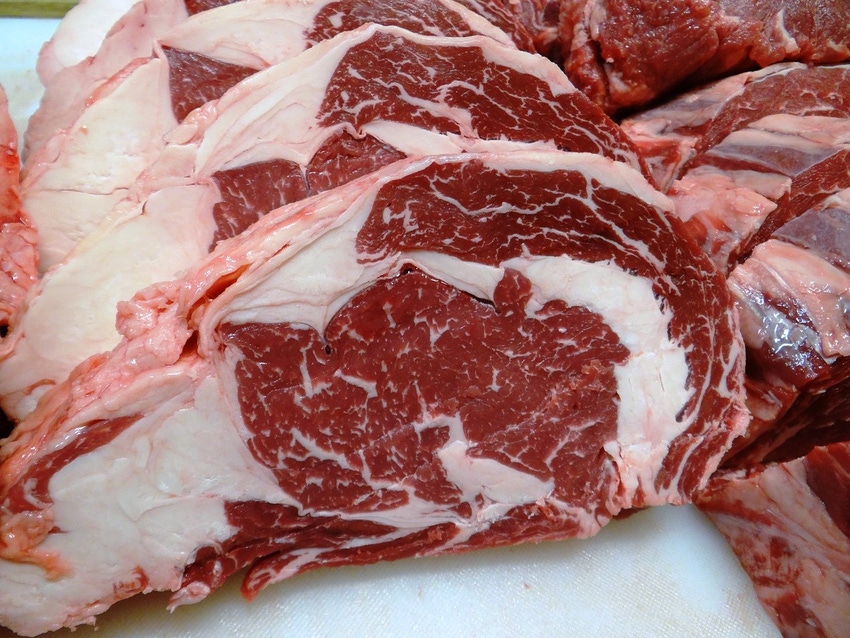FEEDSTUFFS MEAT PRICE OUTLOOK: May 8, 2018
Hay prices have jumped sharply due to expanding drought.
May 8, 2018

Beef: The U.S. Department of Agriculture’s National Agricultural Statistics Service released the monthly “Agricultural Prices” report last week, which showed commodity prices through March and further emphasized the impact of drought-related concerns. While prices for cattle were reportedly unchanged — both from month to month as well as year over year — hay prices jumped sharply from the prior month and widened the gap against 2017. Nationally, all hay prices were up $5 per ton from February but were $17 over last year. When considering regional prices, the all hay prices in Texas were up $4 month over month and were just $9 over a year ago. On the other hand, hay prices in Kansas, where drought conditions have consumed more than 85% of the total hay area, were up $6 month over month but were $47 over a year ago. The interesting area of note was Nebraska, where prices were up $7 from month to month but were $28 over the year prior, yet none of the Nebraska hay area is located in a reported drought zone as of USDA's April 24 report. Reports of cattle producers stocking up on hay in anticipation of drier conditions, coupled with some movement of feedstuffs out of the area, likely led to the price increases. Concerns remain regarding the impact of the worsening drought throughout cattle country.
Pork: Cash hogs trending lower at the start of February eroded producer profit margins to below breakeven levels for the last week of March. As cash hog prices continued heading lower, producers continued to see their margin levels fall apart. Margins quickly moved to double-digits losses during April and stayed in the red throughout the month, even though cash hogs reversed and have been trending higher again for almost the last three weeks. It has taken these three weeks for producers to move back to breakeven as cash markets needed to add back almost $10. Producers found breakeven levels last week, although not for a weekly average profit yet. This adds up to almost six weeks of negative margins, which will erode overall profit levels for 2018. At the end of January, the futures boards were pricing profitability for each month this year, if hedged accordingly. Unfortunately for those who opted to ride the market price, these last six weeks will eat away at yearly margins.
Poultry: Extended layer hen retention (incentivized by strong broiler market prices) and expansion of antibiotic-free/no-antibiotics ever chicken programs have been cited as diminutive to productivity rates compared with expectations, which has kept weekly egg set totals from reaching expectations since early on in 2018. For the week ended April 28, there were a total of 230.15 million eggs in incubators. It was the second time in history that eggs set in incubators had eclipsed the 230 million mark during a single week. The most recent report included a revision of nearly 500,000 additional eggs to the previous week’s data, bringing the total to 229.96 million eggs. Sustained stability at or near the 230 million mark is expected in the near term as preparations are made for the reopening of a processing plant in North Carolina that was rebuilt due to a fire that occurred early in 2017.
For a more detailed look at the weekly forecasts for the various meat sectors and meat cuts, subscribe to the "Meat Price Outlook." Contact Susan Dahlgren at [email protected] for more information.
You May Also Like



